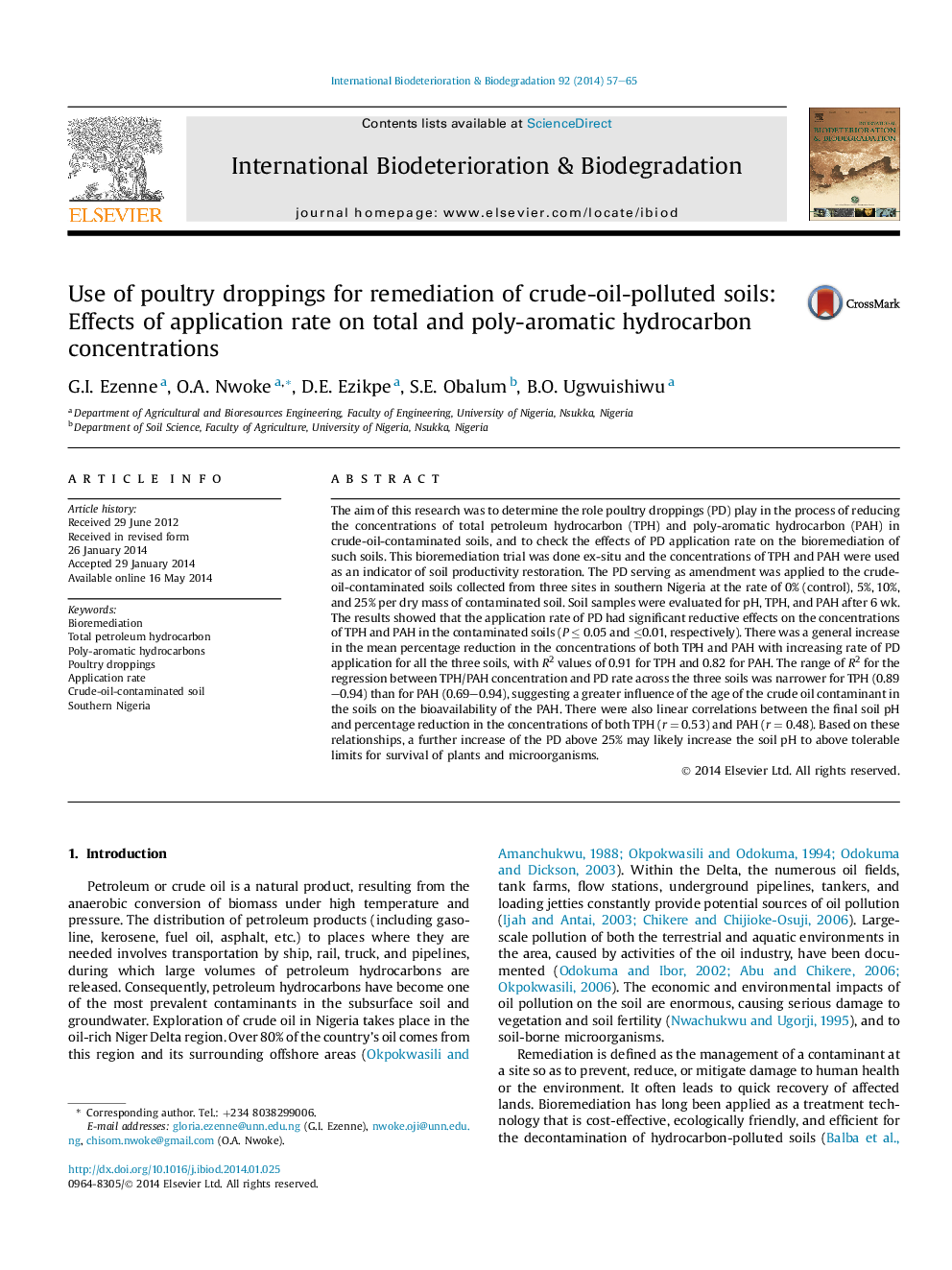| کد مقاله | کد نشریه | سال انتشار | مقاله انگلیسی | نسخه تمام متن |
|---|---|---|---|---|
| 4364771 | 1616324 | 2014 | 9 صفحه PDF | دانلود رایگان |

• Bioremediation of crude oil polluted soil.
• Remediation was achieved using poultry droppings.
• EPA analytical technique was adopted.
• A gas Chromatographic recorder was used as oil pollutant detector and quantification.
• A ratio of 1:4 mixture of Poultry droppings to soil gave the best result.
The aim of this research was to determine the role poultry droppings (PD) play in the process of reducing the concentrations of total petroleum hydrocarbon (TPH) and poly-aromatic hydrocarbon (PAH) in crude-oil-contaminated soils, and to check the effects of PD application rate on the bioremediation of such soils. This bioremediation trial was done ex-situ and the concentrations of TPH and PAH were used as an indicator of soil productivity restoration. The PD serving as amendment was applied to the crude-oil-contaminated soils collected from three sites in southern Nigeria at the rate of 0% (control), 5%, 10%, and 25% per dry mass of contaminated soil. Soil samples were evaluated for pH, TPH, and PAH after 6 wk. The results showed that the application rate of PD had significant reductive effects on the concentrations of TPH and PAH in the contaminated soils (P ≤ 0.05 and ≤0.01, respectively). There was a general increase in the mean percentage reduction in the concentrations of both TPH and PAH with increasing rate of PD application for all the three soils, with R2 values of 0.91 for TPH and 0.82 for PAH. The range of R2 for the regression between TPH/PAH concentration and PD rate across the three soils was narrower for TPH (0.89–0.94) than for PAH (0.69–0.94), suggesting a greater influence of the age of the crude oil contaminant in the soils on the bioavailability of the PAH. There were also linear correlations between the final soil pH and percentage reduction in the concentrations of both TPH (r = 0.53) and PAH (r = 0.48). Based on these relationships, a further increase of the PD above 25% may likely increase the soil pH to above tolerable limits for survival of plants and microorganisms.
Journal: International Biodeterioration & Biodegradation - Volume 92, August 2014, Pages 57–65